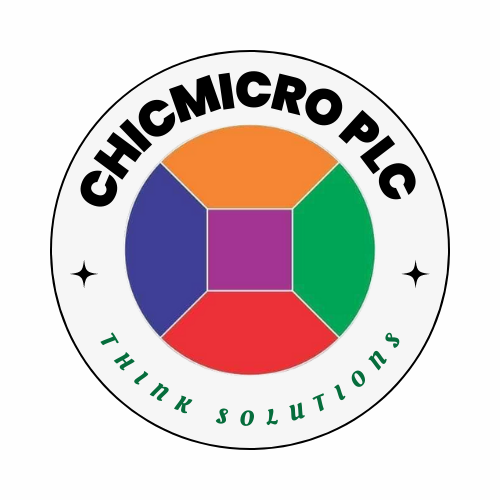Introduction to Custom Software Development
Custom software development is the process of designing and building software applications tailored to meet the specific requirements of a business or organization. This approach is increasingly vital in today’s fast-paced business environment, where standardized solutions may not adequately address unique operational challenges. Companies recognize that off-the-shelf solutions often carry limitations that hinder efficiency and growth, leading to a heightened demand for customized software solutions.
The primary distinction between custom software and off-the-shelf applications lies in their flexibility and adaptability. Off-the-shelf software is designed for broad usage, aiming to cater to a wide audience and serve general needs. While these solutions can be cost-effective and readily available, they may not provide the necessary functionality that specific businesses require. Conversely, custom software solutions provide the opportunity to create applications that are precisely aligned with a company’s processes, goals, and strategies. This bespoke nature ensures enhanced performance, better user experience, and ultimately, greater satisfaction.
One of the most significant benefits of custom software development lies in its ability to evolve alongside a business. As industries change and new technologies emerge, custom software can be easily updated or modified, ensuring that the application remains relevant and efficient. Moreover, organizations benefit from improved scalability. Custom-developed software can expand in functionality and capacity, matching the growth of the business without the need for new software purchases or complex migrations.
In addition to these advantages, custom software often enhances collaboration and productivity by integrating seamlessly with existing systems and tools. By addressing specific pain points and aligning with particular workflows, organizations can foster a more streamlined and efficient working environment. In a landscape where digital transformation is essential for competitive advantage, investing in custom software development becomes increasingly significant for businesses seeking longevity and success.
Identifying Your Business Needs
Before embarking on the journey of custom software development, it is paramount to conduct a thorough assessment of your business needs. This foundation will serve as a roadmap for the entire project, ensuring that the resulting software aligns perfectly with your organizational goals. The first crucial step is to gather requirements, which entails collecting information about what functionalities the software must encompass. Engaging with various stakeholders, including management, end-users, and IT personnel, provides diverse perspectives that can significantly influence the project outcome.
To effectively gather these requirements, several techniques can be utilized. One method is conducting interviews or focus group discussions where stakeholders can articulate their expectations and pain points. Surveys can also be valuable, allowing you to reach a larger audience within your organization quickly. Documenting the responses meticulously will help create a comprehensive picture of the needs at hand. Additionally, observing existing systems can unearth areas for improvement, offering insights into what features the new custom solution should have.
As requirements are being gathered, it is essential to prioritize them based on their significance and urgency. This prioritization ensures that critical features are addressed first in the development process. Furthermore, defining specific objectives that the custom software aims to achieve will also guide the project. These objectives should be measurable and aligned with your business’s overall strategy to facilitate evaluation upon completion.
By investing time in identifying your business needs, gathering the necessary requirements, and engaging with the stakeholders involved, you lay a solid groundwork for custom software development. This preliminary work not only enhances the effectiveness of the solution but also fosters a user-centric approach, ultimately leading to higher satisfaction among users and stakeholders alike.
Choosing the Right Development Team
When embarking on a journey to build custom software for your business, selecting the right development team is crucial. This decision can significantly impact the project’s success and the overall efficiency of the software development process. To evaluate potential development partners effectively, several critical criteria should be considered.
First and foremost, expertise is paramount. Assess the technical skills and domain knowledge of the team. Look for developers with proven experience in the specific technologies and methodologies relevant to your project. For instance, if you require a web application, expertise in languages like JavaScript, Python, or frameworks such as React or Angular is essential. Additionally, ensure the team has experience in developing solutions within your specific industry. This familiarity can enhance their understanding of your unique business requirements and challenges.
Another essential factor is the team’s previous work. Reviewing their portfolio can provide insights into their capabilities and styles. Look for case studies or success stories that demonstrate their problem-solving abilities and innovation. Engaging with previous clients can also offer valuable information about the development team’s reliability, adherence to deadlines, and overall customer satisfaction. Pay attention to testimonials to gauge their reputation in the industry.
Communication skills are often overlooked but play a pivotal role in the development process. Choose a team that prioritizes clear and open communication. This aspect is particularly important in remote teams, as efficient communication can bridge the gap of distance and foster collaboration. Conducting initial meetings can help you gauge their responsiveness and willingness to engage in discussions.
Lastly, consider the differences between in-house teams and outsourcing. While having an in-house team allows for direct oversight and full control, outsourcing can provide access to a wider range of skills at potentially reduced costs. Evaluate your organization’s needs, budget, and project complexity to make an informed decision.
The Software Development Life Cycle (SDLC)
The Software Development Life Cycle (SDLC) serves as a structured framework guiding the phases of custom software development. Each stage in the SDLC plays a crucial role in ensuring that the end product meets business requirements while remaining efficient and effective. The first phase, planning, involves defining the project’s scope, requirements, and feasibility. During this stage, stakeholders evaluate the initial project idea to ascertain its viability and budget expectations, ensuring that resources are allocated wisely.
The second phase is designing, where the intricacies of the software are outlined through architecture and user interface design. This stage focuses on transforming requirements into a blueprint, catering to both aesthetic and functional aspects. Attention to detail in this phase sets the foundation for development, ensuring that all anticipated features align with user needs.
Next comes the coding phase, which involves actual software creation based on earlier designs. Developers write code utilizing suitable programming languages, frameworks, and tools. This stage is critical as it translates concepts into a functioning application. Following this, the testing phase ensures the software operates smoothly; various testing methods, including unit testing and integration testing, are employed to identify and rectify any issues before deployment.
Deployment marks the stage where the software is released for end-users. This involves installation, configuration, and sometimes training users on how to utilize the new system effectively. Finally, maintenance is essential for the long-term success of the software, entailing ongoing updates, bug fixes, and enhancements in response to user feedback and technological advancements. By meticulously adhering to each phase of the SDLC, organizations can develop high-quality, reliable custom software that meets their specific business needs.
Budgeting for Custom Software Development
When embarking on a custom software development project, establishing a realistic budget is essential. The initial estimate should not only encompass the upfront costs associated with development but also accommodate potential hidden expenses. These hidden costs may arise from various factors, including software maintenance, updates, and user training. Therefore, organizations should consider these aspects when drafting their budget to avoid financial surprises down the line.
To create a comprehensive budget, begin by defining the project scope and identifying the specific requirements and features desired in the custom software. A well-defined project scope helps in obtaining accurate cost estimates from development teams. Engaging with multiple vendors can provide a clearer picture of the potential costs involved, which can significantly aid in determining a suitable budget. It is essential to be prepared for potential adjustments as project features become more defined throughout the software development process.
Additionally, including costs for ongoing maintenance should be factored into the budget from the outset. Custom software projects may require regular updates, patches, and troubleshooting support. Businesses often overlook these recurrent expenses, yet they are critical to ensure that the software continues to function effectively over time. Furthermore, organizations should consider the cost of training employees. The successful adoption of custom software relies heavily on adequate user training, which can further contribute to the overall budget.
Importantly, it is crucial to keep in mind the long-term return on investment (ROI) that a well-developed custom software solution could yield. By streamlining operations and enhancing productivity, tailored software can lead to substantial cost savings and increased revenue over time, ultimately justifying the initial financial commitment. Businesses that allocate their budgets wisely are more likely to achieve these long-term benefits.
Agile vs. Waterfall Methodologies
In the realm of software development, two prominent methodologies frequently debated are Agile and Waterfall. Each approach possesses distinct principles, advantages, and disadvantages that cater to different project requirements and business needs.
The Waterfall methodology is characterized by a linear and sequential design process. Typically, it consists of clearly defined phases such as requirements analysis, system design, implementation, testing, deployment, and maintenance. One of its primary advantages is ease of management; since each phase must be completed before moving to the next, it simplifies tracking progress and planning resources. However, the rigidity of this model can also be a significant drawback. Once a phase is completed, revisiting it can be challenging and costly, particularly if alterations are required based on user feedback or changing business needs.
Conversely, Agile methodology adopts a more iterative and flexible approach. It encourages collaborative work through continuous feedback and improvement over time. Agile divides the project into small increments, or sprints, allowing for frequent reassessments and adaptations. This flexibility grants teams the ability to respond swiftly to changes, making it particularly suited for projects where requirements evolve or are not fully defined at the outset. However, this adaptability may lead to scope creep, as stakeholders might continually introduce new features or requests, which can dilute focus and complicate the project.
Ultimately, choosing between Agile and Waterfall methodologies hinges on the specific needs of the project at hand. Agile is often favored for projects that require agility and ongoing reevaluation, while Waterfall may be more effective for projects with well-defined requirements and schedules. By understanding the strengths and weaknesses of each methodology, businesses can make an informed decision that aligns their software development process with organizational goals.
Testing and Quality Assurance
Testing and quality assurance (QA) are critical components of the software development process, essential for delivering a reliable and efficient product. They help ensure that the software meets the specified requirements and functions correctly under various conditions. Implementing a rigorous testing strategy can substantially minimize the risk of defects and enhance user satisfaction.
One of the foundational methods in software testing is unit testing, which involves evaluating individual components or modules of the software. By isolating each part, developers can identify issues early, allowing for prompt corrections. This method is typically automated, which enhances efficiency in the testing process, providing immediate feedback to developers on potential problems. In environments where rapid development is crucial, unit testing can be integrated into regular coding activities as a form of continuous integration.
In addition to unit testing, integration testing plays an essential role in the QA process. This method focuses on assessing the interactions between integrated components, ensuring that modules work together cohesively. As systems grow in complexity, integration testing becomes increasingly valuable as it anticipates potential discrepancies that could emerge when various software units communicate. Proper integration testing can significantly reduce the likelihood of failures experienced by end users.
User acceptance testing (UAT) is another critical phase in quality assurance. UAT occurs towards the end of the development lifecycle, allowing actual users to validate whether the software meets their needs and expectations. This form of testing captures users’ valuable insights, often revealing areas for improvement that may not have been identified during earlier testing phases. By actively involving users, businesses can enhance the software’s usability and ensure that it aligns with real-world applications.
Feedback loops are vital in this context, providing continuous input throughout the development and testing phases. Implementing a feedback mechanism allows developers to adjust and refine the software iteratively, ensuring it meets quality standards and user requirements. In conclusion, robust testing and quality assurance processes are pivotal in building custom software, leading to a final product that is reliable, efficient, and user-friendly.
Deployment and Maintenance of Custom Software
The deployment of custom software marks a significant milestone in the development process, transitioning the application from a controlled environment to a live operational setting. This phase ought to be carefully executed to ensure that the software functions as intended and meets user expectations. The deployment process typically begins with thorough testing in a staging environment, where developers can identify and rectify issues before the software is made publicly available. Once testing is complete, the deployment can proceed, which may involve various strategies such as blue-green deployments or rolling updates to minimize downtime and ensure a seamless transition for users.
Post-deployment, the focus shifts to the ongoing maintenance of the custom software. Maintenance is critical, as it encompasses a variety of tasks aimed at keeping the software functional, secure, and up-to-date. Regular updates are essential for improving functionality, addressing bugs, and adding new features as requested by users. Security patches should also be prioritized to safeguard against vulnerabilities that could compromise data integrity and user privacy. A well-defined maintenance plan should be established, outlining the frequency of updates, the channels for user support, and the process of monitoring software performance.
Additionally, user support plays a vital role in the maintenance phase. Providing users with access to a dedicated support team can facilitate quick resolutions to issues, enhance user experience, and foster user satisfaction. Tools such as ticketing systems and customer relationship management (CRM) solutions can streamline this support process. Thus, both deployment and maintenance are integral to the life cycle of custom software, requiring ongoing attention to ensure that the software remains relevant and continues to meet the evolving needs of the business.
Future Trends in Custom Software Development
The landscape of custom software development is continuously evolving, influenced by a myriad of technological advancements and changing business demands. As organizations seek to enhance their operations and maintain competitive advantages, several emerging trends are reshaping the methodologies and tools used in custom software development. Notably, the integration of Artificial Intelligence (AI) technology has become a pivotal trend. AI not only streamlines coding processes through automation but also enhances decision-making capabilities by providing data-driven insights. Businesses are increasingly implementing AI-powered features such as predictive analytics and intelligent data processing to optimize operations and improve customer experiences.
Another significant trend is the rise of cloud computing. Many companies are transitioning to cloud-based services to enhance flexibility and scalability. Custom software solutions that leverage cloud environments allow businesses to efficiently manage resources, reduce infrastructure costs, and respond swiftly to changes in market demand. The cloud also enables easier collaboration among development teams and provides enhanced security features that protect sensitive business data. As organizations plan for future projects, prioritizing cloud integration will be essential for maximizing the potential of their software solutions.
Additionally, the adoption of low-code and no-code development platforms is transforming the way organizations approach software creation. These tools allow users to develop applications with minimal hand-coding, enabling faster deployment and reducing the reliance on extensive coding expertise. This democratization of software development means that businesses can empower non-technical team members to participate in the development process, thus fostering innovation and accelerating project timelines. As these platforms continue to evolve, companies must consider how they can leverage low-code solutions to stay agile in an ever-changing digital landscape.



